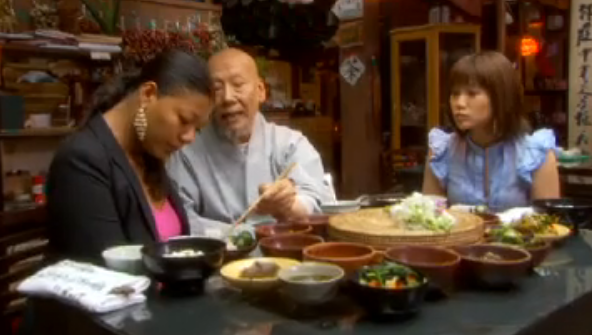Temple cuisine is a unique dining experience in Korea. In accordance with Buddhist beliefs, temple food is primarily vegan, with a few guidelines. No artificial seasonings are included, and spices are also used very sparingly. There are 5 taboo vegetables: garlic, scallion, green onion, other onions, and wild rocambole, a type of Korean spring herb. These are avoided at all cost, because their heat is thought to be a distraction to effective meditation.
The main goal of temple cooking is to highlight the simple yet sophisticated flavors of quality natural ingredients. In general, most temples are located in the mountains or countryside, and this informs the kinds of ingredients involved in temple cooking. Root vegetables and mountain herbs are widely available, so popular dishes in temple food feature wild greens, spinach beet and leaves, wild mushrooms, bean sprouts, and lotus roots, to name a few.
Menus typically change seasonally, but there are several standard dishes that one can always expect to see, namely vegetable porridge, various kinds of tteok (rice cakes of assorted flavor), yeongyip bap (steamed rice with assorted nuts, covered in lotus leaves) and yakwa (traditional korean deep fried cookies made from grain flour and honey).
There are also a few fundamentals of temple cuisine that are important to know. The mind-body connection is paramount, and buddhists consider the act of eating itself to be a form of prayer. Temple food emphasizes an appreciation of nature and a strong concern for healthful eating and sustainability. Every aspect of the dining experience is mindful, from where the food is coming from, who is preparing the food, and what kind of effect it has on the self.
Thankfully, eager diners no longer have to trek to the countryside to get a taste of this unique cuisine. The number of urban restaurants offering temple food is steadily growing. Veronica Kang, a Seoul-based restaurant consultant gave us a few suggestions as to where visitors can go to experience the pinnacle of temple cuisine. Her favorites in Seoul include Sanchon, Kong, and Baru-Gong-Yang. For those looking for a more comprehensive selection of temples around Korea, here’s a great list, courtesy of Visit Korea.




